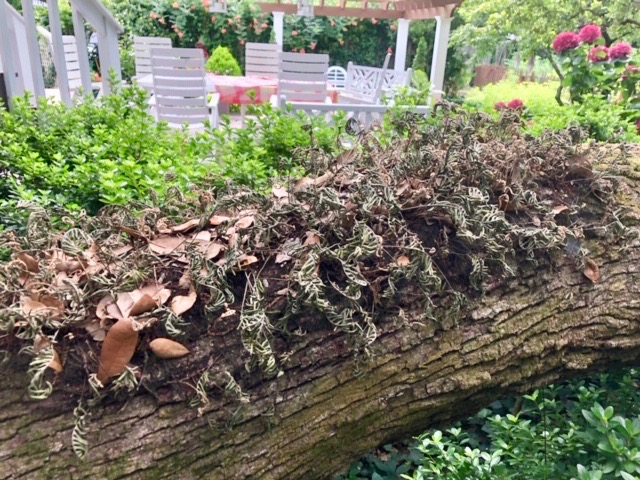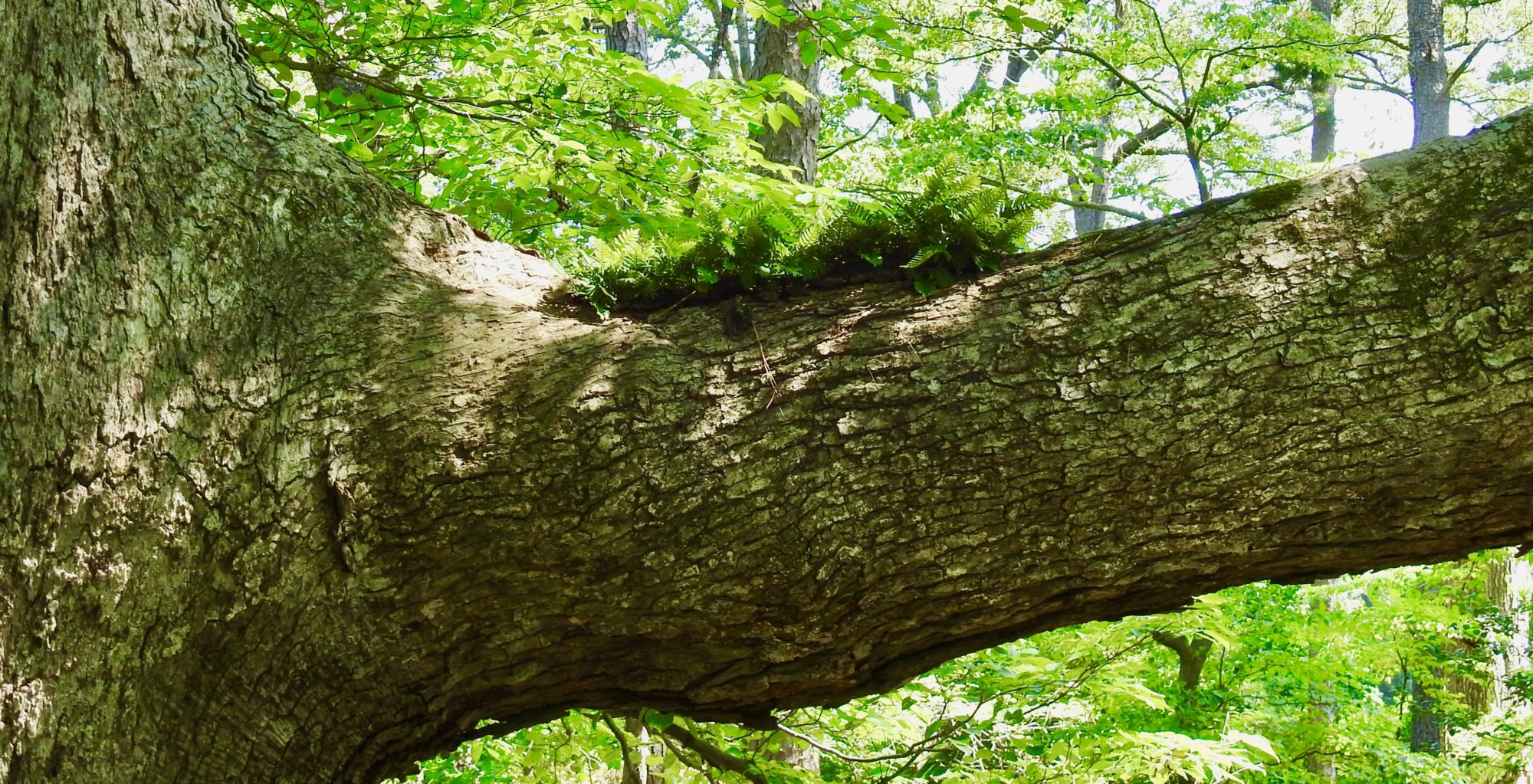Mary Reid Barrow
A dainty resurrection fern is perhaps the smallest attraction in Meg and Bill Campbell’s beautiful live oak sanctuary at the North End of Virginia Beach that I wrote about in last week’s blog.
Yet the very presence of this fern captures your imagination just as the garden does as a whole.
See Bill’s photo of it, above, growing on a long linear limb of one of the live oaks. It’s a dark green happy fern, happy because it rained the night before.
But look at the same fern here. Its leaves are curling up and turning brown, as if it is dying. Bill took this photo right before it rained:

Every few days, depending on the weather, the fern either comes alive or looks like it’s dying. So goes the life of the aptly named resurrection fern.
Even more interesting is where the fern came from? It’s known to grow in Virginia, yet the Campbells didn’t plant it. Why is it growing on one of their trees and doesn’t appear to be on any other trees nearby?
Although live oak nooks and crannies do create habitat for land- bound plants like ferns and small trees, a resurrection fern is an epiphyte. Epiphytes grow on trees for support, but don’t depend on the tree for nourishment. Think of resurrection ferns as more like Spanish moss.
Spanish moss is common in Virginia Beach, especially in First Landing State Park. Though the park is not too far away from the Campbells’ home, there is no Spanish moss growing in their yard, just the resurrection fern along with a number of ground-loving ferns.
Although the Digital Atlas of Virginia Flora says the fern is commonly seen growing on bald cypress trees in swamps and on trees along river banks here in southeastern Virginia, I saw it for the first time at the Campbells’. I then began looking for it in the state park, but so far, no luck.
Theresa Augustin, Director of Environmental Engagement & Outreach at Norfolk Botanical Garden, said she has seen the fern growing naturally on trees on the Blackwater River at the Blackwater Preserve in Zuni.
Resurrection fern also is growing on an oak limb over the Cobblestone Bridge in the botanical garden, Theresa said, but that fern is not a true local. It was brought to the garden from a staff person’s family home in South Carolina:

Still that’s only fern I know of, so far, that you can see in the nearby area.
Like land ferns, resurrection ferns reproduce by spores. Did a bird carry the spores on its feet from the state park to the Campbells’ home or did the wind blow the spores over a high dune ridge and across Atlantic Avenue? If so, where does the fern grow in the park?
Whoever or whatever carried the fern to the Campbells years ago must have known that the perfect environment of their live oak garden awaited its arrival.
Do you have a favorite tree, a secret tree grove or neighborhood climbing tree that you love? Let me know your stories about trees, the critters who live in them and the insects that dine on them. Send an email to maryreid@lrnow.org